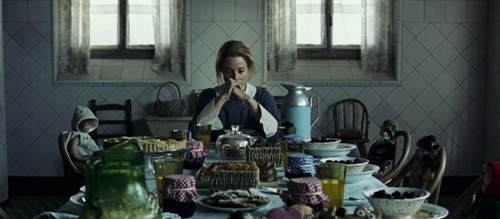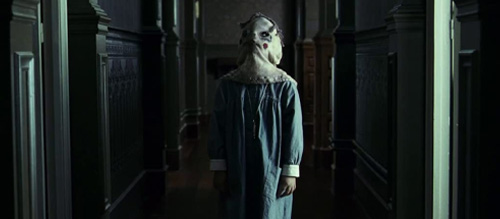The Orphanage (2007) Review
The Orphanage (2007)
Director: J.A. Bayona
Screenwriter: Sergio G Sánchez
Starring: Belén Rueda, Fernando Cayo, Roger Princep, Mabel Rivera, Montserrat Carulla, Geraldine Chaplin, Andrés Gertrúdix, Edgar Vivar, Óscar Casas
Oftentimes an executive producer presenting a project to an audience doesn’t count for a lot. Steven Spielberg didn’t manage to do a lot for Michael Bay’s first Transformers movie for instance. But Guillermo del Toro coming on board for J.A. Bayona’s (Jurassic World: Fallen Kingdom) feature debut The Orphanage did wonders for the project, thereby increasing its budget and marketability and helping to make it a box office smash both in its native Spain and around the world. Del Toro always pities the monster, sees the scary as merely misunderstood and Bayona shares that viewpoint in this, which is far more a highly emotional and tragic mystery than it is a chilling ghost story.
Laura (Belén Rueda) moves back into the former orphanage of her childhood with her husband Carlos (Fernando Cayo) and adopted son Simón (Roger Pricep) with the view to re-open it as a home to care for disabled children. Before long her vulnerable and highly imaginative son seems to be conversing with invisible children, and when he disappears without a trace Laura begins to investigate the troubled history of the orphanage in order to silence the unquiet spirits, chiefly the solitary and masked ghost boy Tomás (Óscar Casas).
Director JA Bayona and screenwriter Sergio G Sánchez both seem fascinated by twin themes of trauma and grief in their work, the pair collaborating on both The Orphanage and on tsunami disaster movie The Impossible, Bayona going on to direct terminal illness fantasy parable A Monster Calls. What more striking way to explore these themes is there than a ghost story, when the sins of the past are always out to get you?
Much like del Toro asked us in Spanish Civil War-set haunted house film The Devil’s Backbone (which would make for a great double bill with this), Bayona is keen to explore the fundamental question, “what is a ghost?”.
The idea that children are more perceptive than adults is one commonly explored in fiction, either because they have more active imagination than adults or, as author Terry Pratchett put it, they can “see things that are actually there”. Few things are creepier than seeing a child conversing happily with thin air and them looking bewildered that you can’t actually see their new “friend”.
The sound design does a lot of the heavy lifting here, from the standard things that go bump in the night to the telltale whistle that means the ghost child Tomás is near. One of the biggest shocks in the film is also delivered to us in distressing audio form only as a psychic (Geraldine Chaplin) makes a sinister revelation in a child’s bedroom while travelling the astral plane.

It’s very possible that James Wan and Leigh Whannell were influenced by Chaplin as Aurora for their horror movie Insidious, particularly in the creation of elderly medium Elise Rainier and her dysfunctional tech support team. Both characters make their appearance about halfway through their respective films and provide momentary relief to the beleaguered family by calmly providing their expertise on the supernatural and proceeding to fight back against the otherworldly forces infesting the house. Inevitably they must fail, and reasons must be manufactured to allow for the protagonists who do not possess any special sight to undertake their battle alone in the final act.
It’s a tragic story and the big emotions often go hand-in-hand with the scares. A scene when Laura lays her fears and doubts bare to her sleeping husband in the bed beside her, only to realise he’s got up to use the bathroom to be replaced by something else is manipulative in just the right way for effective horror. The film also incorporates playing games and kids’ love of hiding and finding finding things to great effect as key scenes comment on both the innocence and the unintentional cruelty inherent in many children’s behaviour.
The Orphanage’s most famous scary scene is a masterclass in simplicity. In the opening moments we watch a group of children playing a game in the grounds of the orphanage, with one girl turning her back and saying “one, two, three, knock on the wall” and turning around, her playmates closing the distance to her without her seeing each time she turns her back again. Laura decides to recreate this game towards the climax of the film in order to communicate with the dead, counting and rapping the wall before turning with cinematographer Óscar Faura’s (The Imitation Game) camera slowly, deliberately panning around the empty room she is in. The first couple of times she sees nothing, then a door has opened of its own accord, and then the children begin to emerge and creep closer before the payoff.
Not everything works; some of the supporting characters don’t bring a lot to the central story and there’s a preparation montage in the final act that unintentionally brings to mind Home Alone, with Laura moving furniture and fixings in her house around to evoke another era and better tempt the ghost children to appear (where you half expect her to be putting grease on the staircase and thumb tacks below the windows), and it’s not helped by the chipper music used in this scene, a rare misstep from composer Fernando Velázquez (Crimson Peak) whose score is otherwise consistently eerie and atmospheric.
The Orphanage might be one the most moving ghost stories ever put to film, and throughout its deliberate, slow-burn telling of a pitch-black gothic mystery it never loses touch with its beating heart. It’s about lost, forgotten, mistreated children and how pain can be passed on decades down the line, but ultimately also that love, care and kindness saves lives and prevents the next generation being both metaphorically and literally haunted.
Score: 20/24


